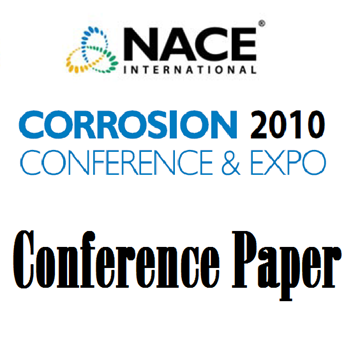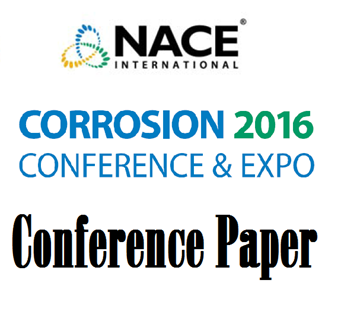View as
Sort by
Display
per page

Available for download
Product Number:
51300-10368-SG
ISBN:
10368 2010 CP
Author:
Roozbeh Fartash, Habib Sabbagh Amirkhizi and Mobin Salasi
Publication Date:
2010
$20.00
We're sorry, something went wrong.
We are unable to complete this action. Please try again at a later time.
If this error continues to occur, please contact AMPP Customer Support for assistance.
Error Message:
Please login to use Standards Credits*
* AMPP Members receive Standards Credits in order to redeem eligible Standards and Reports in the Store
You are not a Member.
AMPP Members enjoy many benefits, including Standards Credits which can be used to redeem eligible Standards and Reports in the Store.
You can visit the Membership Page to learn about the benefits of membership.
You have previously purchased this item.
Go to Downloadable Products in your AMPP Store profile to find this item.
You do not have sufficient Standards Credits to claim this item.
Click on 'ADD TO CART' to purchase this item.
Please review your transaction.
Click on 'REDEEM' to use your Standards Credits to claim this item.
You have successfully redeemed:
Go to Downloadable Products in your AMPP Store Profile to find and download this item.

Available for download
Product Number:
51316-7128-SG
ISBN:
7128 2016 CP
Author:
Fengmei Song
Publication Date:
2016
$20.00
We're sorry, something went wrong.
We are unable to complete this action. Please try again at a later time.
If this error continues to occur, please contact AMPP Customer Support for assistance.
Error Message:
Please login to use Standards Credits*
* AMPP Members receive Standards Credits in order to redeem eligible Standards and Reports in the Store
You are not a Member.
AMPP Members enjoy many benefits, including Standards Credits which can be used to redeem eligible Standards and Reports in the Store.
You can visit the Membership Page to learn about the benefits of membership.
You have previously purchased this item.
Go to Downloadable Products in your AMPP Store profile to find this item.
You do not have sufficient Standards Credits to claim this item.
Click on 'ADD TO CART' to purchase this item.
Please review your transaction.
Click on 'REDEEM' to use your Standards Credits to claim this item.
You have successfully redeemed:
Go to Downloadable Products in your AMPP Store Profile to find and download this item.

Available for download
Product Number:
51322-18039-SG
Author:
Ishan Patel, Gheorghe Bota, David Young
Publication Date:
2022
$20.00
Naphthenic acids and sulfur species in crude oil cause severe corrosion of the steel equipment of crude distillation units in oil refineries.1–3 Because of rapidly changing oil economics, the refineries have inclined towards cheaper “opportunity crudes”, but the high levels of corrosive species, mainly naphthenic acids and organosulfur compounds, in these crudes would reduce the life of the equipment, and also increase the risk of catastrophic failure.3 So the opportunity crudes are often blended with the crudes containing lower levels of corrosive species; this decreases overall concentration of corrosive species and the corrosion rates.4,5 However, corrosion rates are not simply proportional to the concentrations of naphthenic acids and sulfur species that are present in the crude oil.4,5 Without accurate estimation of corrosion rates by crude oils or their “blends”, carbon steel equipment needs to be constructed with higher wall thickness for safety; if still insufficient, high alloy steels are required.
We're sorry, something went wrong.
We are unable to complete this action. Please try again at a later time.
If this error continues to occur, please contact AMPP Customer Support for assistance.
Error Message:
Please login to use Standards Credits*
* AMPP Members receive Standards Credits in order to redeem eligible Standards and Reports in the Store
You are not a Member.
AMPP Members enjoy many benefits, including Standards Credits which can be used to redeem eligible Standards and Reports in the Store.
You can visit the Membership Page to learn about the benefits of membership.
You have previously purchased this item.
Go to Downloadable Products in your AMPP Store profile to find this item.
You do not have sufficient Standards Credits to claim this item.
Click on 'ADD TO CART' to purchase this item.
Please review your transaction.
Click on 'REDEEM' to use your Standards Credits to claim this item.
You have successfully redeemed:
Go to Downloadable Products in your AMPP Store Profile to find and download this item.



